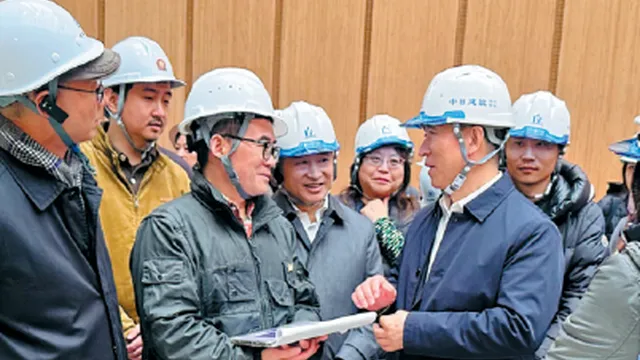
China Pavilion showcases sustainable innovation at Expo 2025 Osaka
2025-04-09 00:00- The China Pavilion will offer an immersive experience showcasing China's innovative green solutions at Expo 2025 Osaka.
- It employs sustainable materials and a zero-waste principle, allowing for cost-effective and eco-friendly construction.
- This pavilion represents China's commitment to sustainability and is the only foreign self-built pavilion to have passed all required approvals.
Express your sentiment!
Insights
In a significant display of technological innovation, the China Pavilion at Expo 2025 Osaka will highlight China’s advancements in green solutions and sustainable development. Opening on April 14 and running until October 13, 2025, this pavilion is an integral part of the international exposition, themed 'Designing Future Society for Our Lives'. The pavilion spans approximately 3,500 square meters and is constructed using renewable and recyclable materials such as modular bamboo wood panels, aligning with a zero-waste principle to eliminate construction waste and promote sustainability. The pavilion’s design emphasizes interactive experiences to engage visitors, utilizing augmented reality to connect global audiences with rich Chinese cultural heritage. The chief exhibit architect, Li Huaisheng, explained that each construction panel is prefabricated, enabling assembly like a puzzle on-site. Post-expo, the pavilion can be disassembled and relocated to China, reflecting both the forward-thinking design and commitment to reusability. The pavilion will provide visitors with immersive storytelling and a journey through the past, present, and future of Chinese culture, including features like a 10-meter calligraphy waterfall that illustrates the evolution of Chinese writing over 3,000 years. The careful planning and building process faced various challenges, but it ultimately resulted in the China Pavilion being the only foreign self-built pavilion to pass all required inspections and approvals. This achievement underscores China’s dedication to sustainability and green construction practices, setting a benchmark for future international exhibitions. The use of advanced technologies such as AR not only enhances visitor experiences but also reduces costs significantly, with Li asserting that construction costs were slashed by 90% compared to traditional methods. As nations come together at Expo 2025, the China Pavilion will act as a bridge of cultural exchange, particularly with Japanese audiences, by highlighting shared cultural resonances like the 24 solar terms. With its innovative construction and interactive experiences, the pavilion aims to reshape perceptions of China globally while bringing forth a commitment to sustainable practices in architectural design.
Contexts
Sustainable architecture has gained significant traction in recent years, particularly at expos where the latest trends and innovations in building design are showcased. These events serve as a platform for architects, developers, and policy-makers to discuss and promote environmentally responsible practices that address the pressing issues of climate change, resource depletion, and urbanization. By leveraging sustainable materials and energy-efficient technologies, architects aim to minimize the ecological footprint of buildings while enhancing their longevity and aesthetic appeal. The emphasis on sustainable architecture at expos reflects a growing awareness of the interconnectedness of our built environment and the natural world, encouraging stakeholders to rethink conventional approaches to design and construction. At these expos, various aspects of sustainable architecture are explored, including the use of renewable materials, energy-efficient systems, and sustainable urban planning concepts. Innovations such as green roofs, solar panels, and rainwater harvesting systems are prominently featured, demonstrating practical applications in real-world scenarios. Furthermore, many exhibitors highlight the importance of passive design strategies that reduce reliance on mechanical heating and cooling systems, ultimately lowering energy consumption and cost. These advances in technology and design not only serve to inspire new projects but also educate industry professionals and the public about the tangible benefits of sustainable building practices. The role of education and community engagement in fostering sustainable design practices cannot be overstated. At expos, workshops and panel discussions often provide platforms for experts to share insights on sustainable architecture trends, case studies, and best practices. Engaging with the local community and stakeholders is vital for successful implementation, as it helps to establish a shared understanding of sustainability goals. These collaborative efforts can lead to the development of policies and incentives that support the adoption of green building practices, ultimately driving a shift towards more sustainable living environments. In conclusion, the emphasis on sustainable architecture at expos serves as a catalyst for innovation and collaboration among various stakeholders in the building sector. These events play a crucial role in raising awareness about the importance of environmentally responsible design, fostering dialogue around best practices, and showcasing cutting-edge technologies. As sustainable architecture continues to evolve, the insights gleaned from such expos will undoubtedly shape the future of our built environment, ensuring that it meets the challenges of the 21st century while safeguarding our planet for future generations.